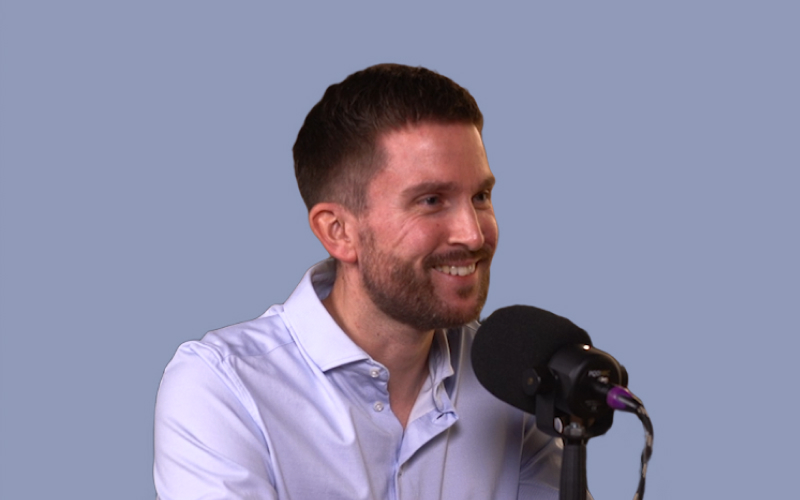How to produce more Winning Ad Creatives - Creative Strategy Decoded

Creative strategy is more than just a buzzword — it is at the heart of every successful advertising campaign. Many think it's all about creative ideas, but that's only part of the truth. It is mainly about really understanding the target group, relying on data and knowing how to emotionally address people. The aim is to get the right message across in the right way at the right time.
Martin Jehle, creative strategist, who has already managed over 200 brands, explains how to design campaigns not only effectively but also successfully in the long term. In doing so, he uses a data-based approach and combines it with clear processes for creative testing — supported by tools such as DatAds, which help to make strategies measurable and comprehensible.
You can find the entire podcast episode on YouTube:
Why creative strategy is so important today
Since the iOS 14 update, it's clear that creative strategy is crucial. The restrictions on tracking and targeting have made many of the old media buying methods almost useless. “Creative is the new targeting,” says Martin Jehle. Today, advertisers need to better understand their target audience and develop messages that really fit their needs — instead of just relying on algorithms.
For smaller brands in particular, it is becoming increasingly difficult to be successful with the old methods in media buying. “Creative testing is the key to winning in the long term,” explains Martin.
The building blocks of a successful creative strategy
What makes for a good creative strategy? Martin divides them into three central elements:
- Copywriting: Convincing texts are the basis of every ad. “It's not just about text, but about arousing emotions and conveying clear messages. ”
- Numerical comprehension: Creativity alone is not enough. A deep understanding of KPIs such as CTR, hook rates, and conversion rates is essential to evaluate the success of campaigns.
- Target group analysis: Only those who really understand their target group can effectively address them. Martin emphasizes that target group research is not a one-time task, but an ongoing process.
“At the end of the day, what counts is how well you understand the target group and whether your messages reach them emotionally and rationally,” summarizes Martin.
Creative testing: With structure to success
A common mistake Martin sees with many companies is that they don't have a clear plan when it comes to creative testing. “Many rely on quantity instead of quality,” he says. Simply testing lots of new creatives is usually useless. What really helps are clear structures and simple processes:
- Hypothesis-based testing: Every creative should be tested with a clear assumption. For example: Which message is well received? What really appeals to the target group?
- Naming Conventions: It is important to name the tests correctly. In this way, you can later understand exactly what was tested and make targeted improvements.
- Systematic iteration: Instead of hoping that a creative will simply be a hit, you should regularly look at the results and keep testing and improving new versions.
And here comes DatAds into the game. The tool helps marketers and creative strategists to better document their tests and easily evaluate the results. This keeps everything organized and allows you to work more efficiently.
Understanding target groups: The key to success
For Martin, every successful creative strategy starts with a good understanding of the target group. “It is not enough to simply throw an image into the algorithm. It's about really reaching out to the people behind the screen. ”
His approach is very simple:
- Post-purchase surveys: Immediately after the purchase, ask where the brand is known and what was the motivation behind it.
- Personal interviews: Direct feedback from customers is invaluable because you often get insights that surveys can't provide.
- Competitor analysis: The meta ad library or TikTok provide a good insight into what competitors are doing and what is well received by their target groups.
With all this information, Martin then develops messages that not only stand out, but also create a real emotional connection with the target group.
From testing to improvement: How successful creatives are created
Martin explains how he turns initial ideas into strong creatives — by constantly improving and adapting them. His approach consists of three simple steps:
- Analyze performance in detail: Martin emphasizes that it's not just key figures such as ROAS and CPA that matter. Values such as hook rate, click-through rate (CTR), and playback time are just as important for identifying weaknesses.
- Data-based optimization: “If the hook isn't well received but the conversion rate is right, I work on making the start more exciting — without changing the main message,” he explains.
- Test step by step: Instead of changing everything at the same time, Martin recommends working in phases — from the idea to fine-tuning individual elements.
When does a creative become a winner?
Not every ad is a success — and that's completely normal. Martin takes a close look when evaluating creatives: It is not only the performance that is decisive, but also the expenditure behind it. “A high ROAS with a budget of 10 euros is not yet a sign of a successful ad,” he explains. Only when a positive development is apparent with higher budgets does a creative become a “winner.”
The potential of an ad can often be seen from the first 50 to 100 euros. “If nothing happens by then, it rarely makes sense to continue working on it,” says Martin. In the end, however, it is the overall picture that counts: Does the ad fit the target group, are the message and the figures consistent? Only then does a creative become a real winner.
DatAds: Your basis for a successful creative strategy
With DatAds, you bring structure and transparency to your creative strategy. Our tool helps you to make the testing process efficient and clearly understand results. Especially at a time when strong creatives are more important than pure targeting, DatAds offers you the basis for sustainable and measurable success.
Conclusion: Creative strategy as a success factor
A successful creative strategy is no accident. It is created through clear processes, data and a deep understanding of the target group. Martin Jehle shows how important it is to systematically test creatives, consistently implement the findings and always focus on the customer.
With DatAds, you can easily implement these strategies in your company and take your campaigns to a new level. A good creative strategy isn't a trend — it's the key to staying successful in the long term.
Mehr Artikel
Hier findest du weitere hilfreiche Artikel.

.avif)


